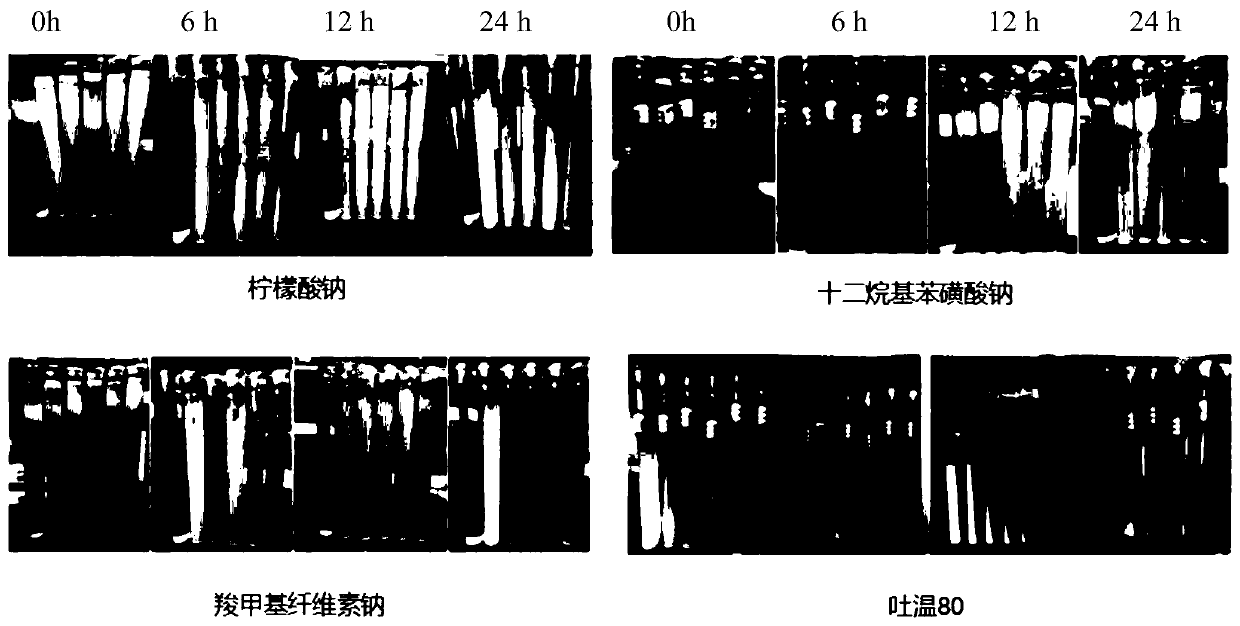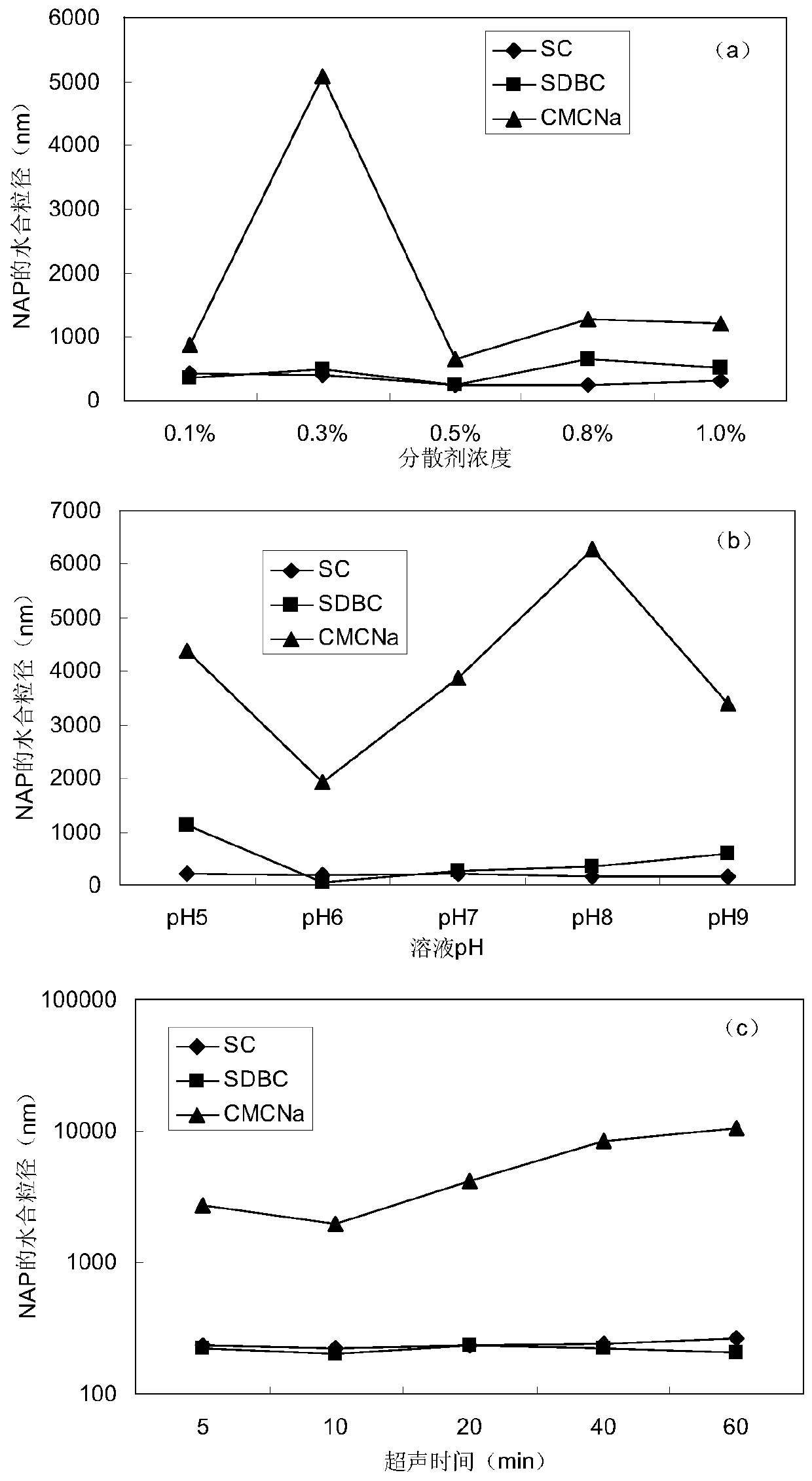A kind of foliar barrier agent and its preparation method and application
A blocker and foliar technology, applied in the field of foliar blocker and its preparation, can solve the problems of reducing cadmium absorption, migration and accumulation, high price, high cost, etc., achieve the goal of reducing cadmium accumulation, convenient operation and use, and conducive to popularization Effect
- Summary
- Abstract
- Description
- Claims
- Application Information
AI Technical Summary
Problems solved by technology
Method used
Image
Examples
Embodiment 1
[0023] The blocking effect of different NAP concentrations on the transfer of cadmium in different parts of wheat was studied by hydroponic experiment. Wheat (Yangmai 16) was cultured from seeds without adding CdCl to the nutrient solution (Hoagland nutrient solution) for the first four days 2 , followed by CdCl-containing 2 Cultured in the nutrient solution, CdCl in the nutrient solution 2 The concentration is 0.3mg / L, cultivated to the 3-leaf stage. After the 3rd leaf stage, put all the roots of wheat into 10mM EDTA solution and wash for 5 minutes to elute the heavy metals adsorbed on the surface of wheat roots, then wash the roots of wheat with deionized water, and transfer the whole wheat to a place without adding CdCl 2 The Hoagland nutrient solution was used to continue the cultivation, and at this time, the spraying of the foliar barrier agent was started. Foliage blockers Weigh different quality nano-hydroxyapatite (NAP) with a beaker, respectively 1.23g, 3.69g and ...
Embodiment 2
[0027] Due to the small particle size of nano-hydroxyapatite, it is easy to agglomerate, and the stable time after ultrasonic dispersion is short, and it is easy to settle at the bottom of the solution. At the same time, plant leaves generally have a waxy layer and a cuticle, which affects the entry of the leaf barrier agent into the plant leaves. . Therefore, it is necessary to screen a suitable foliar adjuvant to improve the dispersibility of NAP and the ability to enter the plant. In this example, the NAP adjuvant formula was screened, and the preparation method of the NAP foliar barrier was developed. The test program is as follows: Weigh 3g of nano-hydroxyapatite (0.3%NAP) and add it to a beaker filled with about 1L of deionized water. After stirring evenly, add suitable additives and adjust the pH of different solutions, and then place the beaker Sonicate at 25°C in a constant temperature ultrasonic instrument. There are four alternative foliar additives, namely sodium...
Embodiment 3
[0031] Select sodium citrate (SC) in Example 2 as the foliar additive, the mass concentration of NAP is 0.3%, the mass concentration of sodium citrate is also 0.3%, the pH of the solution is 6.0, and the ultrasonic time is 10 minutes, and the prepared leaf NAP blocker for field trials. The field plot test was carried out in a cadmium-contaminated farmland in Yixing City, Jiangsu Province. The test rice variety was Wuyunjing 23, the soil pH was 5.39±0.28, and the Cd concentration was 0.62±0.06mg / kg. The test set up 5 groups, in addition to spraying water as the control group (CK), the NAP foliar blocker (NAP) with the optimal formula was also sprayed, as well as 0.3% zinc sulfate heptahydrate (Zn), 0.3% commercial selenium leaf Surface fertilizer (Se) and 0.3% commercial foliar silicon fertilizer (Si). Spray once at the rice heading stage and the filling stage respectively, and the spraying time is the morning or evening on a sunny day. The amount of spraying is 1 liter per p...
PUM
 Login to View More
Login to View More Abstract
Description
Claims
Application Information
 Login to View More
Login to View More - R&D
- Intellectual Property
- Life Sciences
- Materials
- Tech Scout
- Unparalleled Data Quality
- Higher Quality Content
- 60% Fewer Hallucinations
Browse by: Latest US Patents, China's latest patents, Technical Efficacy Thesaurus, Application Domain, Technology Topic, Popular Technical Reports.
© 2025 PatSnap. All rights reserved.Legal|Privacy policy|Modern Slavery Act Transparency Statement|Sitemap|About US| Contact US: help@patsnap.com



